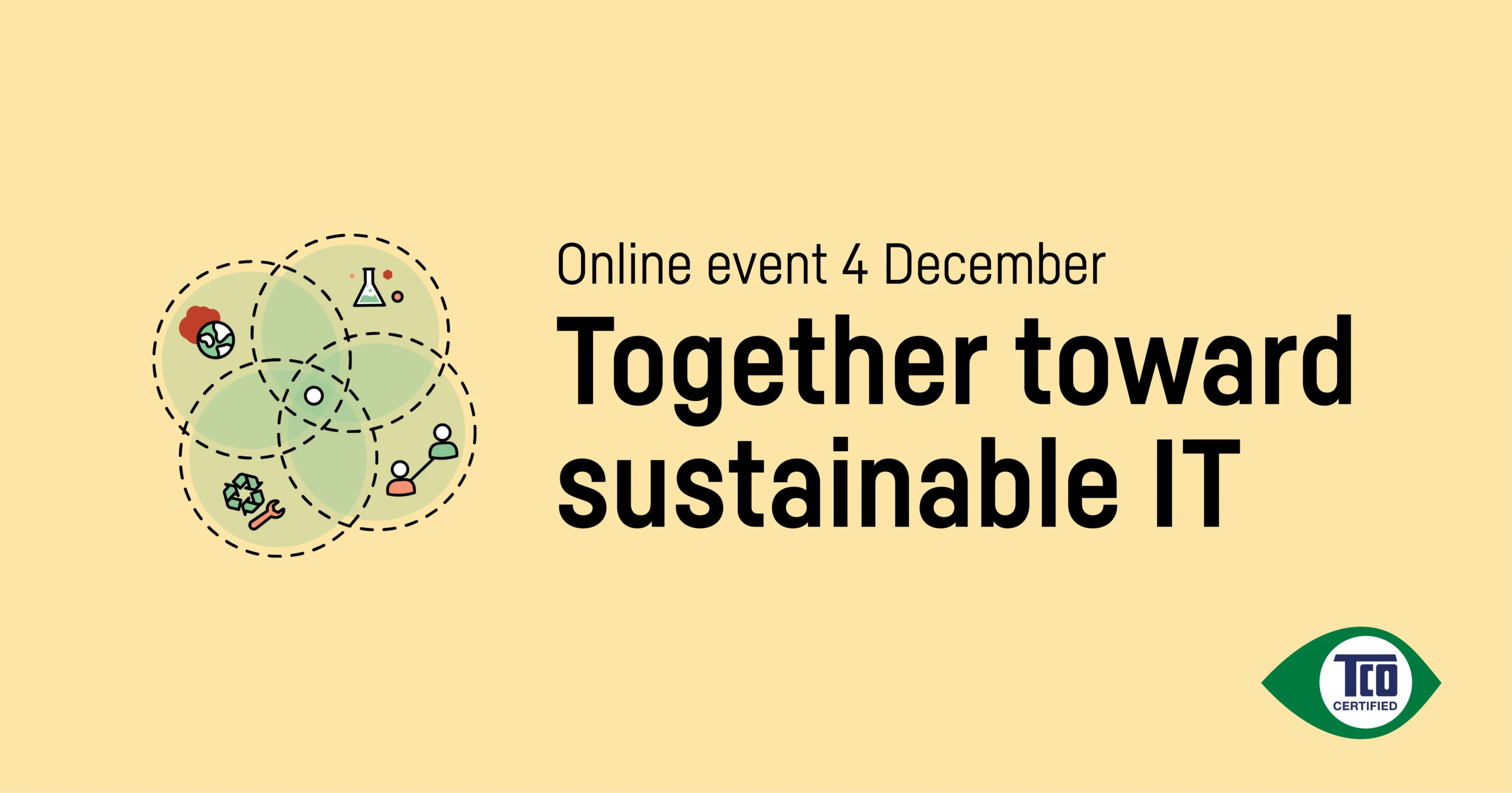Lead auditor and approved social verifier Ashiley Fu from TÜV Rheinland has conducted more than 200 factory audits and 70 interviews with IT product brand owners to verify compliance with criteria in TCO Certified. Here she talks to Stephen Fuller, our expert on socially responsible manufacturing, about expectations, best practices and challenges that the brand owners experience.
This is an edited version of their conversation. You can watch the full version in the video below.

Ashiliey Fu is an approved social verifier and RBA-qualified lead auditor at TÜV Rheinland. She carries out interviews with IT product brand owners as part of the annual assessment process in TCO Certified.

Stephen Fuller leads the development of supply chain and chemical management criteria for TCO Certified. He has worked with criteria development and verification methods in the IT sector for over 20 years.
Stephen: You have a very good understanding and knowledge of the challenges and the impact the annual review process is having on brand owners. You also work to improve the working conditions at a factory level. Can you tell us what the annual review process is, and what it does?
Ashiley: TCO Certified concentrates not only on social responsibility in the factories but also on how the brand owner influences the development and improvements in their supply chains. The annual review is a useful way to learn what measures the brand owners have taken and plan to take. We learn about expectations, best practices and challenges that the brand owners experience.
We know that the earlier the brand owners engage to address and reduce social risks at their suppliers, the better. So, I think [the annual review process] can make us better understand the comprehensive situations and support future collaborations in the industry.
Stephen: Could you walk us through the process you have for doing the reviews?
Ashiley: The brand owners always need to complete a questionnaire before the meeting, and provide supporting documents to prove that the information they give is correct. It’s best if they complete this task two to three weeks before the interview so I can review it and ask for updates if necessary. Usually, our meeting is two hours long. At the beginning of the meeting, I present the purpose and expectations of the review. Then, we discuss questions I have selected from the questionnaire based on my prior review. The aim of the meeting is to give the brand owners new or supplemental inputs.
Stephen: After the meeting, you set a score – red, yellow or green. Green is considered best practice, yellow means that best practice can be achieved if some improvements are made, and red means that a program or practice is missing. Are there ever debates around your scoring of the brand owner?
Ashiley: Sometimes it happens but not for the overall score, just for some specific questions. For example, the brand owner may think the rating I gave was below their expectations. In this case, we will discuss this through emails or even phone calls after the meeting. The rating will be updated if they provide sufficient supplemental proof documents or comments.
Stephen: What is the general mood of the brand owners during the online meetings?
Ashiley: It’s really positive and cooperative from brand owners. We always get the brand owners’ full support, from the beginning when we book the review, to the end when the whole process is completed. If the company representative cannot answer a certain question during the meeting, they usually check with their director, or other responsible individuals in their company, and share the information with me after the interview.
Stephen: Have you seen that the assessment process has led to an increase in experience and competence among the brand owners that you’re meeting?
Ashiley: Many brands we have interviewed have invested a lot and make more efforts to continuously improve their supply chain sustainability because it’s their own obligations and also because many stakeholders and customers are concerned about it. For some brand owners, we can see an increase in experiences and competence during the past years. For example, new tools are introduced to monitor suppliers’ high-risk areas, such as working hours and vulnerable workers, to continuously keep an eye on these areas and drive improvements. Also, other training stations or on-site workshops are provided to suppliers’ workers and their management to enhance their awareness on labor rights and the brand’s code of conduct.
Stephen: With the latest generation of TCO Certified, we take the next step with the assessment process. Apart from assessing the current state for brand owners, we also guide them in a more comprehensive gap review of how and where to focus, to improve their supply chain management systems in key areas. Now that you’ve completed the first annual round of this new review, how has it gone, do you think?
Ashiley: Compared with the old generation, this is much more comprehensive. But for the first round of the reviews, the results show that brand owners are cooperative. They can comment in detail to demonstrate their current practices or expectations toward each option in the question. So generally speaking, it works well I think.
Stephen Fuller and Ashiley Fu
Listen to the whole conversation where Ashiley Fu, social verifier at TÜV Rheinland, offers her perspective on social responsibility and the annual assessment interviews with IT product brand owners.




